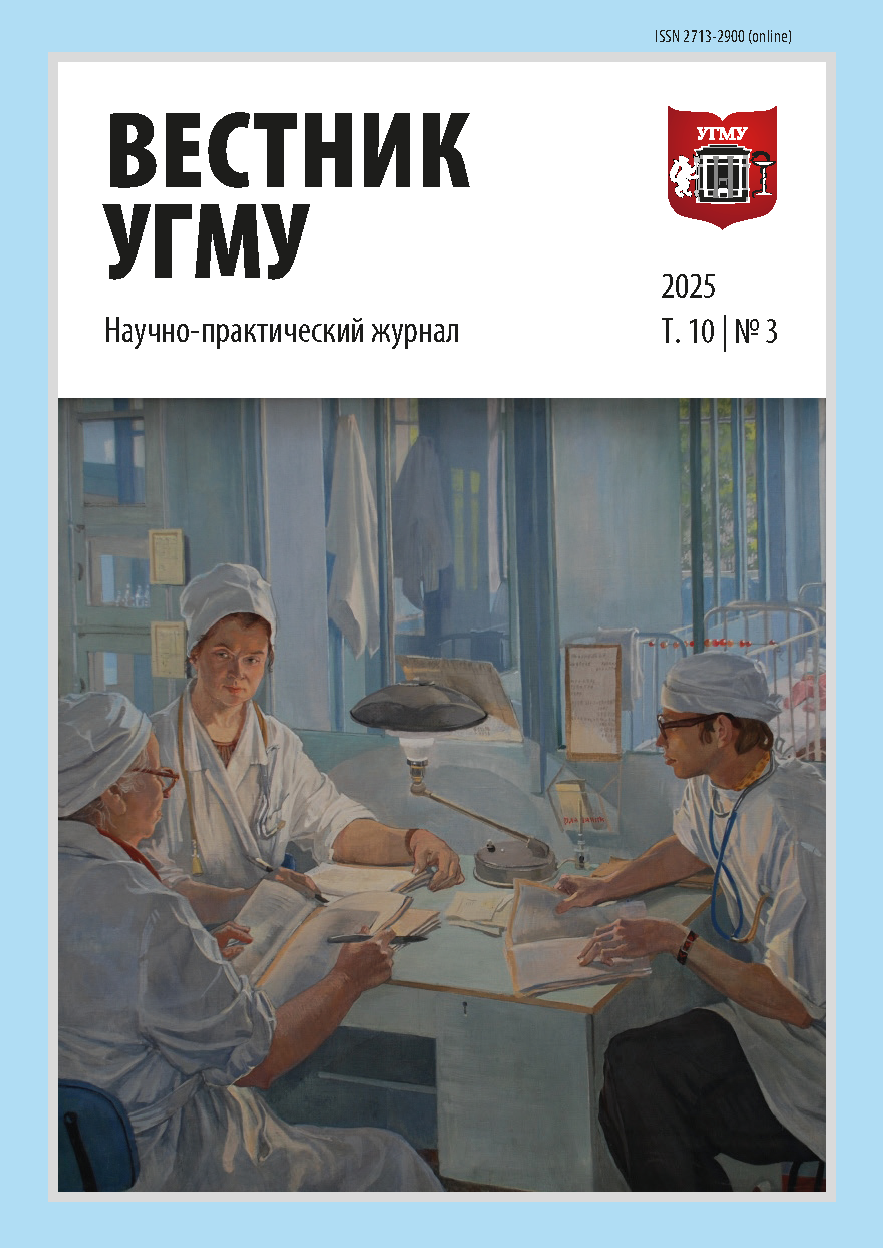Abstract
This article presents the experience of using body plethysmography and fractional exhaled nitric oxide (FeNO) analysis in the diagnosis of respiratory disorders in children. The aim of the study is to evaluate the clinical relevance of these methods in cases with atypical or diagnostically challenging presentations of bronchial asthma. Since 2024, FeNO testing has become available in the pulmonology department, while body plethysmography is performed under contract at a specialized clinic. A total of 50 children underwent FeNO testing, and 11 patients additionally underwent body plethysmography. Three clinical cases are analyzed to illustrate the diagnostic value of modern techniques. In a 13-year-old patient with chronic cough and no typical spirometric signs of asthma, body plethysmography enabled the first detection of reversible bronchial obstruction. In a 9-year-old girl with severe bronchial obstruction syndrome and inconclusive functional tests, an elevated FeNO level indicated eosinophilic inflammation and confirmed the allergic phenotype of asthma, justifying the initiation of genetically engineered biological therapy. In a 10-year-old child with a history of bronchopulmonary dysplasia, FeNO testing and normal functional respiratory parameters ruled out bronchial asthma and confirmed a post-infectious cause of the cough. The results emphasize the relevance and clinical significance of FeNO and body plethysmography in pediatric practice when assessing children with ambiguous respiratory symptoms. The use of these methods contributes to accurate diagnosis, phenotype verification, and personalized treatment approaches.
Acknowledgements
The authors would like to express their gratitude to the Chief Physician of the Children’s City Clinical Hospital No. 9 (Ekaterinburg), I. P. Ogarkov, for his support in introducing new diagnostic methods and assisting with organizing clinical work.
For citation
Tsareva ZhA, Sheina OP, Lipina VR, Biba SZh. Experience of using body plethysmography and exhaled nitric oxide analysis in the diagnosis of respiratory disorders in children. USMU Medical Bulletin. 2025;10(3):e00175. (In Russ.). DOI: https://doi.org/10.52420/usmumb.10.3.e00175. EDN: https://elibrary.ru/JCTQJC.
References
Global Initiative for Asthma. 2022 GINA report, global strategy for asthma management and prevention. Available from: https://clck.ru/3NsPpB (accessed 20 June 2025).
Li W, Jia W, Yi X, Li P, Song C. The significance of fractional exhaled nitric oxide, fractional nasal exhaled nitric oxide and lung function tests in children with moderate-to-severe allergic rhinitis. American Journal of Rhinology & Allergy. 2025;39(3):181–186. DOI: https://doi.org/10.1177/19458924251313495.
Bloom E, Taubel M, Saeidyfar G, Wieslander G, Wang C, Sacco F, et al. Fractional exhaled nitric oxide among primary school children in Stockholm: Associations with asthma, allergy, and home and school environments. Science of The Total Environment. 2025;972:179113. DOI: https://doi.org/10.1016/j.scitotenv.2025.179113.
Parlak B, Tamay Altinel ZÜ, Güler N. The assessment of exhaled nitric oxide in patients with obesity and asthma before and after exercise. Journal of Asthma. 2025;62(6):1013–1019. DOI: https://doi.org/10.1080/02770903.2025.2453507.
Galant SP, Morphew T. Adding oscillometry and fractional exhaled nitric oxide to guidelines potentially improves detection of exacerbation risk factors in pediatric asthmatics. Pediatric Pulmonology. 2025;60(1):e27379. DOI: https://doi.org/10.1002/ppul.27379.
Davis MD. The role of fractional exhaled nitric oxide and oscillometry in pediatric asthma. Respiratory Care. 2025;70(6):632–639. DOI: https://doi.org/10.1089/respcare.12674.
Hagman C, Björklund LJ, Bjermer L, Hansen-Pupp I, Tufvesson E. Lung function deficits and bronchodilator responsiveness at 12 years of age in children born very preterm compared with controls born at term. Pediatric Pulmonology. 2023;58(11):3156–3170. DOI: https://doi.org/10.1002/ppul.26636.
Chawes B, Elenius V. Pulmonary function testing for the diagnosis of asthma in preschool children. Current Opinion in Allergy and Clinical Immunology. 2022;22(2):101–106. DOI: https://doi.org/10.1097/ACI.0000000000000815.
Wawszczak M, Kulus M, Peradzyńska J. Peripheral airways involvement in children with asthma exacerbation. The Clinical Respiratory Journal. 2022;16(2):97–104. DOI: https://doi.org/10.1111/crj.13456.
Abdo M, Pedersen F, Kirsten AM, Veith V, Biller H, Trinkmann F, et al.; ALLIANCE study group. Longitudinal impact of sputum inflammatory phenotypes on small airway dysfunction and disease outcomes in asthma. The Journal of Allergy and Clinical Immunology: In Practice. 2022;10(6):1545–1553.e2. DOI: https://doi.org/10.1016/j.jaip.2022.02.020.
Gabriele C, Nieuwhof EM, van der Wiel EC, Hofhuis W, Moll HA, Merkus PJ, et al. Exhaled nitric oxide differentiates airway diseases in the first two years of life. Pediatric Research. 2006;60(4):461–465. DOI: https://doi.org/10.1203/01.pdr.0000238242.39881.64.
Gabriele C, de Benedictis FM, de Jongste JC. Exhaled nitric oxide measurements in the first 2 years of life: Methodological issues, clinical and epidemiological applications. Italian Journal of Pediatrics. 2009;35(1):21. DOI: https://doi.org/10.1186/1824-7288-35-21.
This work is licensed under a Creative Commons Attribution-NonCommercial-ShareAlike 4.0 International License
Copyright © 2025 Tsareva Zh. A., Sheina O. P., Lipina V. R., Biba S. Zh.





